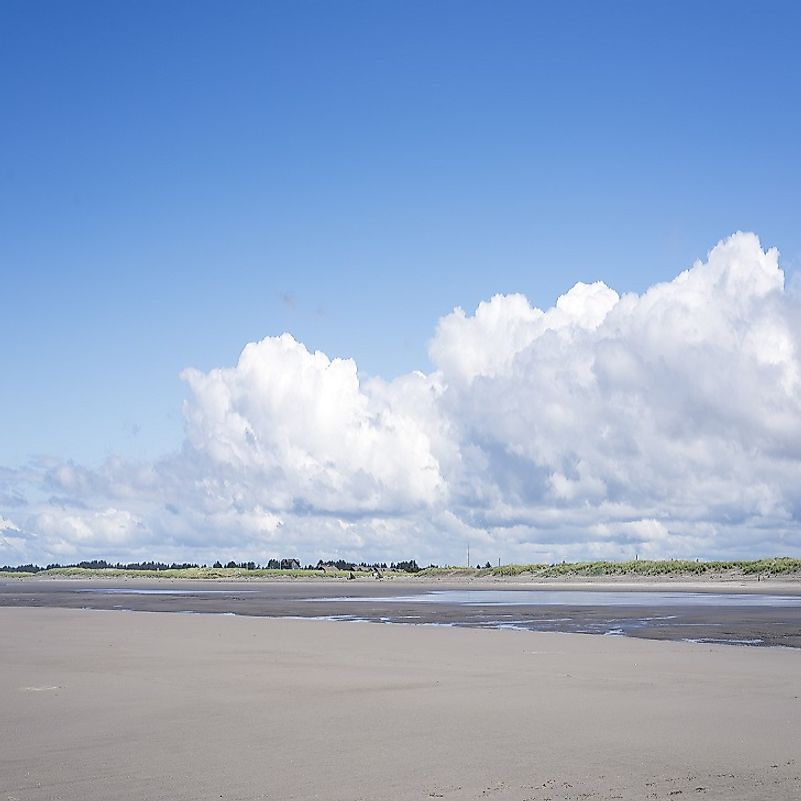Long Beach, Washington - Unique Places Around the World

5. Description
Long Beach is a city located in Pacific County in the state of Washington, in the northwest of the United States. With a population of 1,346 as of 2014, and with a total area of 1.35 square miles, Long Beach is a small-sized city sitting atop part of Long Beach Peninsula in western Washington. Long Beach Peninsula is bounded by the Pacific Ocean to its west, and is characterized by its continuous sand beaches on that side of its landmass, of which Long Beach city is a part. Long Beach shares a climate typical to other regions along the U.S. West Coast. It is marked by warm summers, cool winters, and generally mild weather throughout the year.
4. Tourism
At 28 miles long, Long Beach Peninsula holds the claim of being the longest beach in the United States. Along with the neighboring city of Ilwaco to its south, and the unincorporated townships of Oysterville and Nahcotta to the north, Long Beach provides for a popular beach destination for the people of the neighboring Seattle, Washington (266 kilometers/165 miles) and Portland, Oregon (185 kilometers/115 miles) metropolitan areas. It is also accessible to toursists from elsewhere in the U.S., nearby Canada, and further abroad by way of the transportation hubs of Seattle and Portland.
3. Uniqueness
Tourists will find endless forms of adventure sports in and around Long Beach. These include activities like kayaking, horse riding, and birdwatching. Apart from these, Cape Disappointment and North Head Lighthouses, located in Ilwaco, overlook the Pacific Ocean, and are also popular among tourists. The city is also known for hosting an annual international kite festival the third week of every August, along with a sand sculpture competition. Cape Disappointment lighthouse is a part of Cape Disappointment State Park, a state park 1,882 hectares in size located southwest of Ilwaco, and offers beach exploration, ship watching, and an opportunity to explore the area’s rich natural and cultural history through its hiking trails. The park also offers visitors a breathtaking view of the Columbia River, the longest river in the Pacific Northwest region of North America.
2. Habitat
Due to its vicinity to the Pacific Ocean, Long Beach offers several seabird-watching opportunities to enthusiasts, especially during the spring and fall migration for these birds. Long Beach falls under the Southwest Loop of the Washington Birding Trail, which itself features 270 of Washington’s 346 annually recorded bird species. Tourists may encounter the spring migration (lasting April through May) of Black-bellied and Semipalmated Plovers, Western and Least Sandpipers, and Short-billed and Long-billed Dowitchers alike. Brown Pelicans, meanwhile, are seen to be migrating through the area in the fall. In fact, thousands of shorebirds are seen to be arriving in fall, and migration peaks during mid-September, when this place becomes any serious birdwatching enthusiast's own little slice of heaven.
1. Threats
A team of federal biologists recently detected large blooms of toxin-producing algae along the Pacific Coast. The effects of these toxic algae are said to be stretching from central California all the way up the Pacific Coast to Alaska. On the Long Beach Peninsula, the toxic algae is being consumed by the smaller marine prey species, who then in turn pose a threat to the larger species that eat them, such as sea lions. Scientists recently found a sea lion contracting domoic-acid poisoning after it had consumed such a poisoned smaller prey. As a neurotoxin, domoic acid is dangerous to all forms of life, including humans, as it can affect the functioning of the brain's neurons, and thus can cause seizures and possibly even death. The formation of the toxic algae is said to be a direct result of warmer than usual sea temperatures that the Pacific Ocean has witnessed during the last few years. The rise in sea temperature, according to scientists, leads to increased chance of ocean acidification. This hypothesis is tied to the global warming phenomenon.







